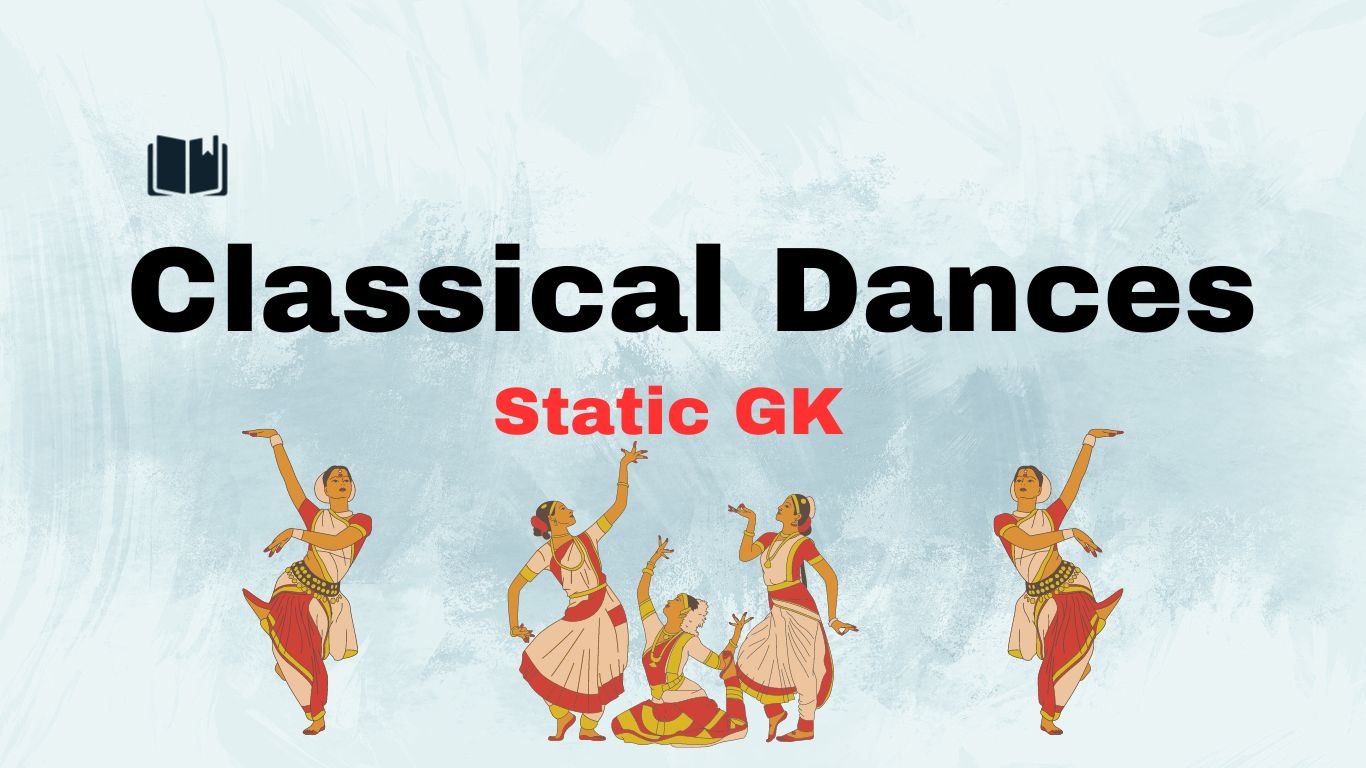Let’s dive deeper into the classical dances of India, offering a comprehensive look that can aid in your SSC CGL preparation.
Introduction
India’s classical dance forms are an integral part of its cultural heritage, reflecting the rich traditions and deep-rooted history of the country. These dances are not just art forms but also modes of expression and storytelling that convey emotions, celebrate life and embody the spiritual depth of Indian philosophy.
History and Evolution of Classical Dances in India
The origins of Indian classical dance are mythologically attributed to Lord Brahma, who created the Natya Veda from elements of the four Vedas to offer a divine pastime to the gods. This fifth Veda incorporates dance, drama, and music, drawing from the Rig Veda for speech, the Yajur Veda for gestures, the Sam Veda for music, and the Atharva Veda for emotion demonstrating the spiritual depth integral to these dance forms.
The origin of Indian classical dance can be traced back to the ancient Hindu Sanskrit text of the Natya Shastra, attributed to the sage Bharata Muni, which dates back to between 200 BCE and 200 CE. This text details a comprehensive framework of dance, including gestures, expressions, and step-by-step choreography, indicating the dance’s ritualistic importance and use in temple rituals and spiritual ceremonies over the centuries.
Major Classical Dance Forms
For an organized and straightforward presentation of India’s classical dances, here’s a table listing each major form along with its originating state and key characteristics:
| Classical Dance Form | Originating State | Key Characteristics |
|---|---|---|
| Bharatanatyam | Tamil Nadu | It is called the Oldest Dance Form of India. It is also called “Tanjore Natyam” Originated by “Devadasis”, “Temple Dancers” or “Dashiattam” |
| Kathak | North India | Graceful, fluid movements and themes often revolve around the pastimes of Radha and Krishna. |
| Kathakali | Kerala | Elaborate costumes, makeup, and face masks, with dramatic storytelling and detailed gestures. |
| Manipuri | Manipur | Rhythmic foot movements, spins, extensive mime and gestures tell stories from epics like Mahabharata and Ramayana. |
| Odissi | Odisha | Graceful, fluid movements, and themes often revolve around the pastimes of Radha and Krishna. |
| Kuchipudi | Andhra Pradesh | Fluid movements, sculpture-like poses, expressive eyes and faces, often based on religious themes and spiritual ideas. |
| Sattriya | Assam | Originally a monastic dance form, performed as part of daily rituals in monasteries, depicting mythological stories. |
| Mohiniyattam | Kerala | Gentle, flowing movements, feminine, focused on themes of love and devotion. |
Classical dance is a revered and traditional form of artistic expression known for its structured principles, sophisticated techniques, and rich repertoire. It encompasses a variety of regional styles across India, each bound by the ancient rules outlined in the Natya Shastra, the seminal treatise on Indian performing arts. Central to these dance forms is the concept of storytelling, which is vividly expressed through symbolism and graceful movement.
Aspects and Components of Indian Classical Dance
The Natya Shastra outlines two primary aspects of classical dance:
- Lasya: Representing the grace and feminine elements of dance, lasya involves expressions of emotion (bhava), aesthetic flavor (rasa), and expressive storytelling (abhinaya).
- Tandava: Symbolic of the masculine aspects, tandava emphasizes rhythm and powerful movements.
Expanding on these, the Abhinaya Darpan by Nandikeshwara, a treatise from around the 5th to 4th century BC, distinguishes three essential components of dance:
- Nritta: Pure dance movements that are rhythmic and aesthetic but non-expressive in nature.
- Natya: The dramatic aspect that tells a story through dance.
- Nritya: The expressive component of dance, utilizing mime and gestures to convey emotions, with significant use of hand movements (mudras) and facial expressions to depict various feelings and stories.
